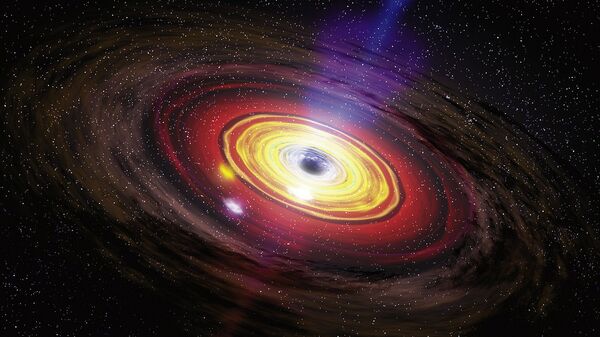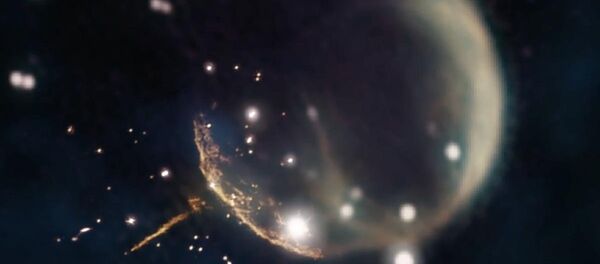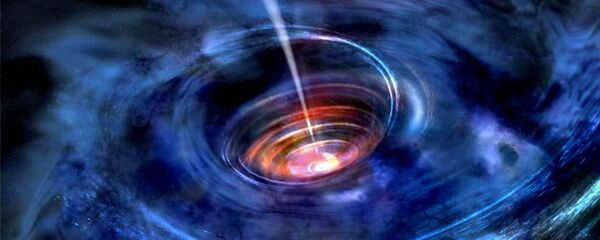In terms of the history of the universe, supermassive black holes are a relative newcomer to the cosmic arena. Astronomers can't even agree on how they form — are they just regular black holes that kept on growing, are they created by some uncommon collapsing stellar matter or did they form right after the big bang and get a "head start" on accumulating mass?
However, what we do know is that supermassive black holes are very big, very bright and spew a ton of matter and radiation out into the universe. We also know that nearly all massive galaxies have one at the center — what they call active galactic nuclei (AGN).
A pair of studies published earlier this year investigate these key questions.
A group of Italian astronomers led by Samuele Ronchini of Gran Sasso Science Institute in Italy has used the European Space Agency's XMM-Newton space telescope to study one AGN with the romantic name PKS 2251+11, a black hole they described as "an ideal candidate" in their March 15 paper published on scholarly peer review site arXiv.org.
In the study, astronomers looked at the radiation spewed out of the black hole's accretion disk — the rotating belt of gas and stellar matter slowly spiraling into the black hole, but still outside its event horizon, which is the "point of no return" for anything falling into the black hole, even light.
That material gets sped up really fast around big black holes and that makes it emit a ton of radiation from radio waves (long wavelengths) to gamma rays (very short wavelengths), including through the visible spectrum of light. The Italian astronomers' study looked at X-rays shot out by PKS 2251+11 perpendicular to its accretion disk, forming great jets of matter and radiation.
"Through the X-ray analysis of an observation performed with the XMM-Newton observatory, we have obtained novel information about the geometry, the kinematics and the physical state of the regions surrounding the accreting SMBH [supermassive black hole] at the center of the BLRG PKS 2251+11," the astronomers wrote in the paper.
What they found was that about 90 percent of the x-rays get absorbed by "clumpy" clouds of dust about one third of a light-year away from the AGN, as well as a lot of information about just how the "jetting" process works, although they noted there's still a lot of work to be done to understand just how that jet is formed.
Another study published in January by American scientists from California, New Hampshire and Massachusetts tried to figure out just how supermassive black holes form. Their study was published in The American Astronomical Society on January 24.
Noting that the peak period of supermassive black hole growth coincides with the peak period of star formation — about 10 billion years after the big bang, or roughly 3.7 billion years ago — they suspected that the two phenomena were interlinked.
"Both central black hole growth and star formation are fed by the abundance of molecular gas and dust that can be traced by the infrared emitted by the dust," the scientists wrote. "Dust grains, heated by the radiation from young stars and AGN accretion, emit strongly in the infrared. Since AGN activity also produces X-rays, the expectation is that AGN should track strong dust emission and that X-ray and infrared emission should be correlated."
"Star formation is associated with disruptions that stir up the gas and induce accretion," the scientists noted. "Moreover, the local universe shows a tight correlation between SMBH mass, host galaxy bulge mass, and the spread of stellar velocities."
With this understanding, they poured through data on x-rays from the Chandra X-Ray Observatory and infrared from the Spitzer and Herschel space telescopes. "Although the team did find a trend consistent with the infrared correlating with AGN X-ray activity over a wide range of cases, they did not find one when compared with the AGN's infrared (not- X-ray) contributions," they wrote.
They suggested this discrepancy could be caused by the angle with which we view the supermassive black hole. If the jet is pointed directly at Earth (meaning we're looking "down" on the accretion disk), it looks very different than if we see the galaxy "in profile," looking at it along the length of the disk. However, they said "more sensitive, deeper observations should be able to sort out more clearly the physical processes associated with the AGN."




